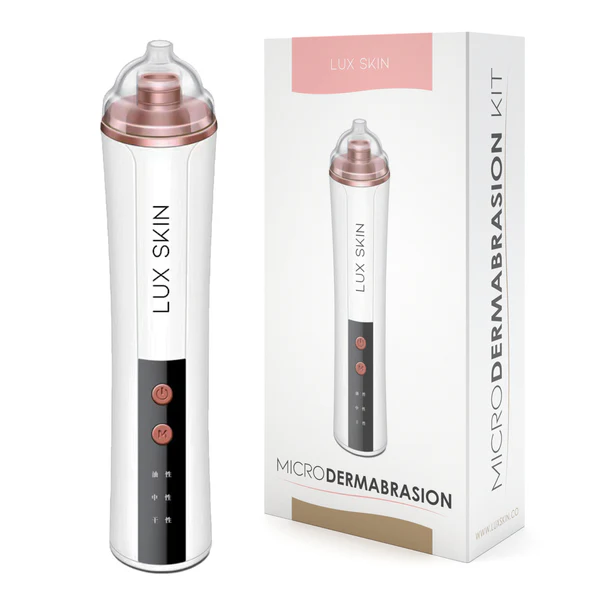Microdermabrasion for Dark Spots: Does It Work?
Dark spots and hyperpigmentation can be frustrating, making many people search for effective treatments. Among the options available, microdermabrasion stands out as a popular professional treatment. But does it really work for reducing dark spots? In this guide, we’ll explore how microdermabrasion works, its effectiveness, and whether it’s the right choice for your skin concerns.
What Is Microdermabrasion?
Microdermabrasion is a non-invasive skin treatment that exfoliates the outer layer of dead skin cells, promoting cell turnover and revealing fresher, brighter skin. It’s commonly used to treat acne scars, fine lines, and—most importantly—dark spots.
How Does Microdermabrasion Work?
The procedure uses a specialized device with fine crystals or a diamond-tipped wand to gently remove the top layer of skin. This stimulates collagen production and helps fade hyperpigmentation over time.
Types of Microdermabrasion
- Crystal Microdermabrasion: Uses fine crystals to exfoliate.
- Diamond-Tip Microdermabrasion: Uses a diamond-coated wand for precision.
- At-Home Microdermabrasion: Uses handheld devices like the PMD Personal Microderm Classic.
| Type | Best For | Downtime |
|---|---|---|
| Crystal | Mild hyperpigmentation | None |
| Diamond-Tip | Deeper dark spots | Minimal |
| At-Home | Maintenance | None |
Does Microdermabrasion Work for Dark Spots?
Yes, microdermabrasion can help reduce dark spots, but results vary depending on skin type and severity of hyperpigmentation.
How Effective Is It?
Studies show that consistent treatments can lighten dark spots by 20-40% over several sessions. However, deeper pigmentation may require additional treatments like laser therapy.
Factors Affecting Results
- Skin Type: Works best on mild to moderate hyperpigmentation.
- Frequency: 6-12 sessions are typically needed.
- Aftercare: Sun protection is crucial to prevent new dark spots.
| Skin Concern | Effectiveness |
|---|---|
| Sunspots | High |
| Post-Acne Marks | Moderate |
| Melasma | Low (requires combination therapy) |
Professional vs. At-Home Microdermabrasion
While professional treatments offer deeper exfoliation, at-home devices like those from PMD Beauty can be effective for maintenance.
Pros of Professional Treatment
- Stronger exfoliation
- Customizable settings
- Supervised by a dermatologist
Pros of At-Home Devices
- Cost-effective
- Convenient
- Good for mild discoloration
What to Expect During Treatment
If you opt for professional microdermabrasion, here’s what happens:
Step-by-Step Process
- Cleansing: Your skin is prepped and cleansed.
- Exfoliation: The device removes dead skin cells.
- Extraction (Optional): Pores may be cleared.
- Moisturizing: A soothing serum is applied.
Aftercare Tips
- Avoid sun exposure for 48 hours.
- Use gentle skincare products.
- Stay hydrated to support healing.
Alternative Treatments for Dark Spots
If microdermabrasion isn’t enough, consider these alternatives:
Laser Therapy
More aggressive but effective for stubborn pigmentation. Learn more about RF vs. laser treatments.
Chemical Peels
Uses acids to exfoliate deeper layers of skin.
Topical Treatments
Vitamin C, retinoids, and hydroquinone can help lighten spots over time.
Conclusion
Microdermabrasion is a proven method to reduce dark spots, especially when combined with proper aftercare. While it may not work for severe hyperpigmentation, it’s a great option for mild to moderate discoloration. For those interested in medical aesthetics, explore the pros and cons of medical device treatments to make an informed decision.
Ready to try microdermabrasion? Consult a dermatologist to see if it’s right for you!
FAQ
How many microdermabrasion sessions are needed for dark spots?
Typically, 6-12 sessions spaced 2-4 weeks apart are recommended for noticeable results.
Is microdermabrasion painful?
No, it’s a painless procedure with minimal discomfort—often described as a light scratching sensation.
Can microdermabrasion worsen hyperpigmentation?
If done incorrectly or without sun protection, it can trigger post-inflammatory hyperpigmentation. Always follow aftercare instructions.
Who should avoid microdermabrasion?
People with active acne, rosacea, or extremely sensitive skin should consult a dermatologist first.
Can I use microdermabrasion with other treatments?
Yes, it can be combined with chemical peels or laser treatments for enhanced results, but always under professional guidance.

